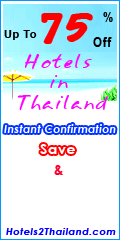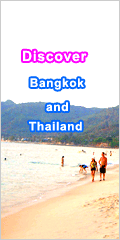Picture an island nestling in the calm, azure blue waters of the Gulf of Thailand fringed by coral reefs with beaches of powder soft white sand framed by a backdrop of coconut trees, their fronds dancing in the gentle breeze. The palms stretch upward to the central uplands, thick with lush tropical vegetation. The coast and lower slopes are awash with coconut palms making Koh Samui the ‘Coconut Capital of Thailand’. It is said the island sends 2,000.000 coconuts per month to Bangkok. This green vista is interspersed occasionally by black granite boulders. Some of these rock formations appear to defy gravity by hanging dramatically against the hillside. This tropical paradise is called Koh Samui. A 250 square kilometre rounded island which is about the same size as Penang.
Koh Samui translates from Koh, the Thai word for island, and Samui, which is probably derived from the Chinese “saboey” meaning safe harbour. The magic island first came to the attention of world travellers when it started to crop up in conversation in many of the cheap hotels that then clustered around Bangkok’s Hualamphong Railway station some 45 years ago. It was difficult to get to, requiring special negotiation with fishermen in Suratthani lying 80 kilometres across the sea on the mainland. When you reached the island, there was no road and so those intrepid voyagers hopped from beach to beach by boat. In the past forty plus years things have changed hugely.
The island is now served by an international airport that looks more like a botanical garden than the accepted tradition of functional ‘air station’. Flights leave hourly for the new Suvarnbhumi Airport in Bangkok and link the island to additional destinations such as Singapore, Kuala Lumpur, Hong Kong, Pattaya and Phuket. A 52-kilometre road rings Samui and links all the major towns. Nathon the capital plays host to government buildings and banks and serves as one of the ferry ports serving the Thai mainland. The road skirts the 635-metre mountain that sits centrally astride the landmass and takes in the main resorts of Lamai and Chaweng. Lamai is the smaller of the two and offers a quieter and perhaps cleaner beach. The latter caters for, perhaps, a younger and more energetic visitor. Further on lies Bangrak is better known as “Big Buddha Beach” as it takes its name from the huge Buddha statue at the eastern end of the bay. Borphut boasts a trendy fisherman’s village, much favoured by French tourists and Maenam to the north offers spectacular views across to Koh Phangan and the Ang Thong Natural Marine Park. This area is much less crowded than the bustling Chaweng and the marginally quieter Lamai. It still retains its original Thai flavour. However, to get to grips with authentic ‘Samui’ you need to rent a car or motorbike and take one of the many roads that lead up away from the coast and into the mountain. As you climb higher you come to rubber plantations and hidden away villages clustering around paddy fields, still hanging onto a traditional way of life that is far removed from the tourist dominated hotels, resorts, restaurants and bars that cluster around the coast.
Samui has over the years developed a reputation as centre of complementary medicine offering spas designed to detox inhabitants of an overstressed globe. The Health Oasis Resort located adjacent to the unspoiled Bang Po Beach to the west of Maenam offers stunning views across to Koh Phangan. Sit in the authentic vegetarian restaurant after six p.m. and turn your head to the west you will witness spectacular sunsets over the islands that comprise the Ang Thong National Park. Health Oasis is unique in that the Thai Department of Health lists it as a traditional medicine hospital. It specialises in supervised detox and fasting treatments.
Be sure of this, whatever your tastes Koh Samui will be able to provide a venue for a holiday that will linger long in your memory. So if you are planning a trip of a lifetime whether it be for tourism or health this magical island is a venue well worth considering.
by :website: http://www.healthambit.com






















